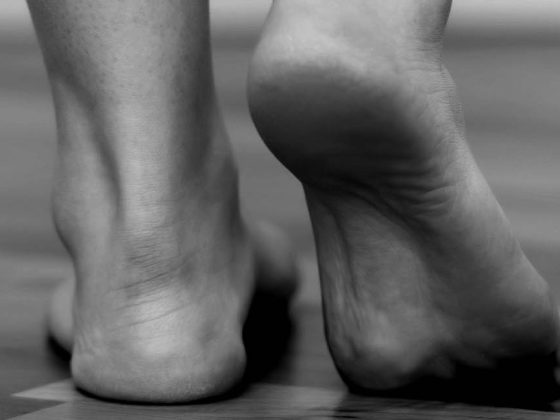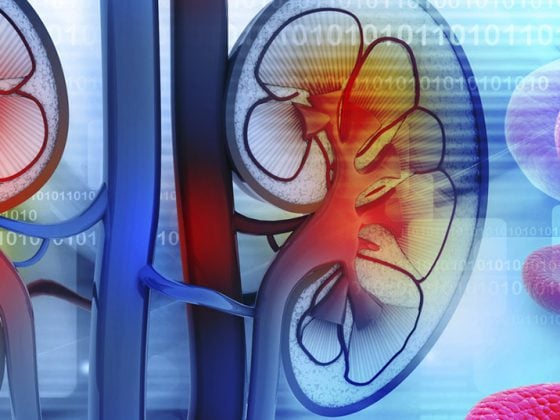The ESH annual meeting also addressed orthostatic hypotension and how to become aware of the phenomenon in everyday practice. In an update to a study presented at last year’s Congress, the authors conclude that potentially affected individuals can be identified using a simple score. Five variables are associated with orthostatic hypotension in an elderly population.
In orthostatic hypotension, blood pressure drops in the upright position, which may be accompanied by symptoms such as dizziness, unsteady gait, blurred vision, ringing in the ears, difficulty concentrating, fatigue, or even fainting. Pain, especially in the shoulder/neck area, is also possible. In flat position, the symptoms usually disappear quickly. Older people are particularly affected. It stands to reason that orthostatic hypotension is thus causative for many falls and an increase in mortality [1].
Definition of a screening population
Besides age, are there certain characteristics that qualify a person for screening for orthostatic hypotension? The recommendations on this vary. While the 2013 ESH/ESC guidelines [2] advise appropriate checking in the elderly and diabetic patients, the 2011 NICE guidelines [3] emphasize clarification of falls in the history and recognition of symptoms such as dizziness after standing up. According to the guidelines, blood pressure should be measured one and three minutes after standing up. However, it turns out that this is rarely done in everyday clinical practice. The search for orthostatic hypotension is not routine. Usually, such a search takes place only when indicative symptoms are present. In the absence of signs, appropriate testing is also less likely to be used (only about one-third of nonsymptomatic elders with orthostatic hypotension are specifically tested for it). Thus, the phenomenon often remains undetected – to the detriment of the patient and also the healthcare system. The follow-up costs of falls are enormous. A clinically-graspable approach to locating potentially affected individuals quickly, easily, and safely would provide a valuable service to practitioners.
An analysis of the so-called InChianti data therefore aimed to clarify which characteristics can be used to predict orthostatic hypotension (and thus also the risk for consecutive falls) in elderly persons. InChianti is a population-based study with elderly participants from different registries in the Chianti region of Italy. All had undergone extensive baseline interviews and examinations, including measurement of blood pressure one and three minutes after rising. Follow-up was at intervals of three years each. A systolic blood pressure drop of ≥20 mmHg between the supine and standing positions was defined as orthostatic hypotension.
Simple scoring system with good informative value
At last year’s meeting, a preliminary analysis of the study showed that the likelihood of orthostatic hypotension can indeed be inferred from the patient’s existing medical history.
At the time of study inclusion, 7.5% and 6.6% of the total of 1352 participants had orthostatic hypotension one and three minutes after standing, respectively, which was clearly associated with increased all-cause mortality over approximately 10 years. Specifically, the risk of mortality doubled by a factor of 2 for both variants of orthostatic hypotension (HR 2.0; 95% CI 1.5-2.7). Factors associated with orthostatic hypotension in multivariable analysis included:
- Age ≥65 years
- Fall last year
- Previous diagnoses of hypertension, stroke, or angina.
Consequently, in this cohort, the presence of diabetes was not a predictor of orthostatic hypotension.
Each of these five variables was collected using a simple scoring system from 0-5. From this, the DROP score (Detecting Risk of Postural Hypotension) was developed. It was found that eleven patients with a DROP score of 2 needed to be screened to identify a person with orthostatic hypotension (Number Needed to Screen, NNS 11), and eight with a score of 3 to arrive at a confirmed case (NNS 8).
Update on this year’s meeting
The fact that diabetes did not lead to an increased risk caused surprise. In the aftermath of the study, some experts doubted the actual applicability of the DROP score. The authors pointed out the preliminary nature of the results. The score would need to be further refined and validated.
There was now an update at this year’s meeting. According to study leaders, “more rigorous” analysis of the data showed that the predictor “angina” needed to be replaced with “Parkinson’s disease.” This is plausible considering that the autonomic nervous system dysfunction in Parkinson’s disease may prevent the proper adjustment of blood pressure. The other factors are still valid according to the refined analysis. Diabetes is still not among the top five predictors, showing an association in the univariable analysis but no longer in the multivariable.
Of note, the DROP score not only predicted the likelihood of orthostatic hypotension, but also increased mortality (HR 1.8 with each score increase on the DROP score), cognitive impairment based on the Mini Mental State Exam (MMSE), and future falls in the next two to three years.
Specifically, the researchers evaluated data from 1317 participants for the update, approximately half of whom served as the “derivation cohort” and the other as the “validation cohort.” Thus, the calculated predictors or score could be tested directly. 8.6% of the first cohort and 6.7% of the second cohort showed corresponding drops in blood pressure one minute after rising. Data on blood pressure drops three minutes after standing up will be presented at another time, according to the authors. They may well be relevant, since quite a few patients show a delayed response.

Predictors also tested included sex, medication use, frailty, and MMSE score. The five strongest associations and their associated prevalences and odds ratios are shown in Table 1 . Each additional point on the DROP score doubled the probability of orthostatic hypotension (OR 1.8; 95% CI 1.3-2.5; p<0.001).
Source: 26th European Meeting on Hypertension and Cardiovascular Protection, June 10-13, 2016, Paris.
Literature:
- Fedorowski A, et al: Orthostatic hypotension predicts all-cause mortality and coronary events in middle-aged individuals (The Malmö Preventive Project). Eur Heart J 2010; 31: 85-91.
- Mancia G, et al: 2013 ESH/ESC Guidelines for the management of arterial hypertension. Eur Heart J 2013 Jul; 34(28): 2159-2219.
- NICE guidelines: Hypertension in adults: diagnosis and management. Published date: August 2011.
- Clark C, et al: Predicting Postural Hypotension, Falls, And Cognitive Impairment: The Inchianti Study. European Meeting on Hypertension and Cardiovascular Protection 2016. Parallel Oral Session 3C.
CARDIOVASC 2016; 15(5): 33-34











